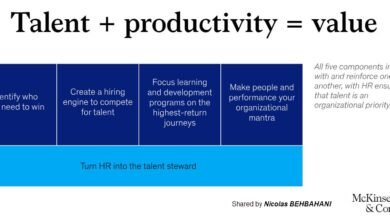
By | Ravi Santhanam | Executive Coach – Leaders & Teams
The New Year is here and so is the Vaccine. In a few months, large scale inoculations will begin. Over time, the Covid 19 virus would be pushed back and many of the restrictions we are coping with will ease. Would that mean, we will get back to living and working the way we did before the pandemic? No, that will not be. The changes in 2020, have been far too great, for that. What then would be a new way or new normal by the end of 2021? What are the trends that would shape it? This article attempts to identify the key trends likely to shape the new normal and their implications for your organisation, your team, and you. Do treat it as an early word, and not as the final word. What 2021 holds, we will know for sure, only by end of 2021.Thr
You are the leader of your team and organisation. You don’t have the luxury of waiting till the end of 2021. You are tasked with anticipating emerging changes and preparing your team for them. This article is intended to facilitate you in this effort.
As I share the three trends, you will observe that they are not exactly new and have been in vogue, for a while and may begin to wonder, what is new and why this article? There are two reasons, why it would be useful for us to think through these trends, even if they are not entirely new.
- These trends have not had the benefit of natural evolution and the maturation that goes with evolution. The suddenness of the pandemic has willy nilly precipitated these changes. And, the rest of the ecosystem, has had to rapidly make ad-hoc, and sub-optimal adjustments. All these wrinkles need to be ironed out in 2021.
- The interplay play between these seemingly independent trends is becoming more and more apparent with time. Therefore, there is a need to take a holistic view while formulating the responses.
Let us now examine these three, potentially most influential trends, that are likely to buffet your organisation, in 2021. In addition to describing these three trends, I have included several real-world examples so that you can visualise the trend, as relevant to your business. Further, I have also provided a few practical tips on possible responses, which may help you get started with formulating appropriate responses.
Trend 1 – Hygiene Consciousness
You should expect Customers, Employees, Suppliers, Contractors, Service Providers, and every person your organisation interfaces with, to be a lot more hygiene conscious, than before. The last ten months have amped up everyone’s sensitivity, to the risk of interpersonal virus transfers! Merely meeting OSHAS or similar standards would no longer be enough. You would need to exceed existing regulations by a big margin. Let me give you some examples.
Eg 1: Cleaner and less crowded workplaces, shops, and establishments would become the norm. These norms will go well beyond, perfunctory entry point checks, that we come across. You shouldn’t be surprised if, initially customers, employees, and visitors, and maybe even the regulators, expect your factories’ offices and showrooms to conform to rather stringent guidelines, similar to the ones for public gymnasiums.
Eg 2: It is probable that some employees or customers, will be more cautious than others and would like to maintain some physical gap/aloofness, even after everyone has been vaccinated. You would need to create a culture of tolerance of such individual preferences, within the larger team.
Eg 3: In B2C businesses, the hygiene standards of the franchisee’s showroom, may well become a determinant of brand perception, sales, and market share!
Eg 4: Even in a B2B context, business partners such as suppliers and customers, may visit your facilities, only when they feel confident of your hygiene standards.
Of course, many more such examples, come to mind. The key is how do we respond? Here are a few tips to get you started.
Tip 1: Approach the hygiene challenge the way you approached TQM / Deming / ISO Certification. Get your team to develop common-sense hygiene norms, specific to your context, with OSHAS as a minimum/floor. Create empowered groups, to plan and implement these standards. Meet them periodically and review them for adequacy and conformance.
Tip 2: Proactively review your existing health-related policies such as sick leave, medical insurance, etc. If any inadequacy or gap comes to light, address it. Then communicate the updated policy with realistic examples so that expectations are realistic.
Tip 3: Convince rather than coerce conformance. Establish reward and recognition programs for hygienic conduct. Tactically, refrain from penalising non-conformance, in the initial months.
Trend 2 – WFH&A
Work From Home (WFH) and its twin, Work From Anywhere (WFA) is now mainstream. A reasonable understanding of the practical implications, of these twins, has come about, in the past ten months. Over time, as WFH&A, and its variants continue to be practiced, subtler and longer term implications will come to the surface and create a fresh set of enthusiasm and fears. For example, there certainly is enthusiasm over the following.
Eg 1: I can save so much on commuting time, and costs, for 3~4 days/week.
Eg 2: I can now live in the suburbs in better accommodation since I don’t need to commute every day.
Eg 3: Our organisation can save so many millions on office space rentals, power, etc.
Eg 4: We can now employ talent living in tier 2 and tier 3 towns, and benefit from the wider catchment area and possibly lower costs.
And some of the fears that would emerge are,
Eg 5: If my role necessitates working from the office or plant, Am I not being forced to take more health risks as compared to my colleagues, who work largely from home? How Am I being compensated for that?
Eg 6: Working from Home has its challenges, too. How does one deal with the expectations of children and the elderly?
Eg 7: How can my team collaborate without the camaraderie and “chai pe charcha” moments, at work?
Eg 8: If my role can be performed without regularly visiting the workplace, does it mean my role is unimportant? And, will it be outsourced or automated before long?
You will agree that all such enthusiasm and fears are legitimate. Organisations have to come up with a way of preserving the enthusiasm and alleviating the fears. How does one do that?
This is a complex problem and there are no simple solutions. Any meaningful solution would have to be organisation specific. In such cases, it is best to approach the problem with an explorer’s mindset, often described as, “Look at the problem with curiosity from multiple points of view, leverage innovation, new technology, and lateral thinking, to find new kinds of solutions, in collaboration with others”. Some practical tips for approaching this way are,
Tip 1: Would it be possible to restructure teams around “natural-grouping and process linkages” (as is often done in the case of project teams) and then establish a common rhythm on when and who will work from office or home?
Tip 2: Would it be practicable to map geographic clusters where employees prefer to live and create mini-offices in the neighbourhood, and then virtually connect such mini-offices?
Tip 3: Would it be possible to identify roles/tasks that need to be contracted out / outsourced in the medium term and come clean with the concerned employees? Some of them may be open to learning new skills while others may prefer to become entrepreneurs, providing professional services from the outside. We will never know until we try.
Tip 4: If face to face interactions are going to be fewer, wouldn’t it be important to make every such interaction count? If virtual interactions are going to be the norm, shouldn’t your team become more skilled at picking up non-verbal cues, even in virtual interactions? You will need to invest big in enhancing your team’s communication skills in general and empathetic listening in particular.
None of the above are easy but well worth the effort. There is a good reason why it is said, “Nothing worth having, comes easy.”
Trend 3: Digitisation, Automation & Mechanisation (DA&M):
In 2021, irrespective of your current levels of DA&M, you will be embarking afresh, on all these three at all your facilities, be it an office or a plant or a warehouse. Traditionally businesses have pursued DA&M, to save cost, reduce cycle time, etc. But this time around, there will be an additional and overarching reason! We have to embrace DA&M, because our customers want us to. Let me give you a few examples.
Eg 1: Financial transactions, was gradually and steadily getting digitised. And then came the pandemic and everything including, petty daily purchases and highway tolls, moved to contactless mode, at lightning speed. The day is not far off when scan or swipe is the norm and cash is the exception. The day is not far off when even the neighbourhood Kirana store, would be reluctant to accept cash!
Eg 2: Buying customised shoes without visiting a store or trying them on, is possible today. Could customised fashion, be far behind?
Eg 3: Safe Pizza, Contactless and Untouched, all the way from the oven to your doorstep, is being advertised in recent months. Hygiene has moved from being an entry ticket to a winning ticket, in the market place!
Eg 4: The lockdown exposed consumers and businesses to previously unimagined possibilities. For example, there was the case of technician, helping a customer service her domestic water filter, by guiding the customer, over a video call! Can on-board diagnostics on domestic appliances be far away?
Eg 5: The role of on-line interactions has become far greater, in recent months, even in sale of consumer durables such as cars and homes, traditionally considered to be highly dependent on touch and feel. The impact, on car retails process has been so significant, that many are considering replacing large standalone car showrooms with compact digital showrooms, in shopping malls and high street!
At a first glance, it may seem that all the above examples point to digitisation and not automation and mechanisation. Do keep in mind that wherever there is digitisation, automation (making decisions) and mechanisation (substitution of human effort), have to be present in the background. Digitisation relies on automation and automation in turn relies on mechanisation. Recall any recent retail transaction, where you paid digitally. Would the digital payment have been possible without the system of barcode scanning i.e. mechanisation and approval of payment i.e. automation? What the 2020 pandemic has done is, make such digital transactions, the preferred mode among most buyers and sellers. And this is a big deal. The ramifications, transcend investments on digitisation, automation, and mechanisation; they call for reimagining and restructuring the organisation around digital processes, with all the attendant challenges of reorienting, retraining, and re-skilling the workforce!
If all this sounds like a tall order, it is so, because it is indeed one. How do you as a leader, respond to such a profound challenge? Here are some tips.
Tip 1: Start early and stay the course with grit and determination, but never rush through the journey. Approach this as a marathon run and not as a sprint event. This is a task to be accomplished in the medium to long term. A classic situation where the tortoise may have an advantage over the hare!
Tip 2: Initiate a pilot DA&M Project, in that part of your business, where the risks would be low and the effort to returns ratio is likely to be high. This way you will begin the journey, on a winning note.
Tip 3: During the pilot, set up mechanisms to learn from others’ successes and failures. Go beyond your direct competitors and check out adjacent businesses with similar challenges. For instance, if you are in industrial logistics, check out adjacent businesses such as document courier and food delivery as well. They are a lot more likely to share useful and practical insights!
Tip 4: Showcase the success and learnings of the pilot and build an appetite for change and growth, in the organisation.
Finally, let us look at the interplay between these trends. Take a quick glance at any of the dozen-plus examples, above. You will observe that at least two of the three trends, are embedded, in every one of them! Need I say more?
Summing it up, leaders like you, have a big role to play this new year. Your organisation as well as the national and global economies, are counting on you to do that. Go ahead and play your role, to the fullest.
Republished with permission and originally published at Ravi Santhanam’s LinkedIn









